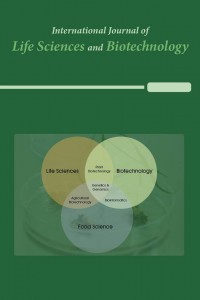YENİLİKÇİ KENDİNDEN İYİLEŞEN HİDROJEL KOMPOZİT OLARAK AZOT KATKILI KARBON KUANTUM DOTS-GELLAN GUM
Gerginlik sensörleri, vücut hareketlerini algılamak ve fizyolojik sinyalleri izlemek için yaygın olarak uygulanabilir. Bu alandaki çalışmalar arasında iletken özelliklere sahip hidrojeller dikkat çekmektedir. Ancak hidrojellerin kullanım sırasında kolayca zarar görmeleri nedeniyle uygulamaları sınırlıdır. Bu çalışmada, jellan zamkı (GG) polimerine nitrojen katkılı karbon kuantum noktaları (NCQD'ler) eklenerek kendi kendini iyileştiren iletken bir hidrojel üretildi. Hazırlanan polimerik matris ağındaki hidrojen bağlarının kendi kendini iyileştirme özelliği bir dereceye kadar ve iletkenlik NCQD'lerin eklenmesiyle desteklenmiştir. Hidrojelin 1, 2 ve 3 kesme/iyileştirme döngüsündeki elektriksel geri kazanım süreci, görsel olarak tasarlanmış bir LED ampul seri devresi ile gösterilmiştir. Elde edilen 3 boyutlu hidrojelin gerçek zamanlı direnç değişimi ölçüm sistemine bağlanması sonucunda kesme/iyileştirme döngülerindeki direnç değişimleri izlendi. Kesim ve temas süresi dahil toplam kesik-iyileşme sürecinin süresi 2.12 s idi. Ek olarak, iki kesilmiş silindirik hidrojel parçası birleştirildikten sonra serbest duran bir jel köprüsü oluşturulmuştur. Ortaya çıkan hidrojel kompozit özellikleri nedeniyle, kişisel sağlık teşhisi, insan aktivitesinin izlenmesi ve insan hareket sensörleri gibi çeşitli uygulamalarda umut verici bir potansiyele sahiptir.
Anahtar Kelimeler:
Kendi kendini iyileştirebilir, hidrojel kompozit, iletkenlik
Nitrogen-Doped Carbon Quantum Dots-Gellan Gum As An Innovative Self-Healable Hydrogel Composite
Tension sensors can be widely applied to detect body movements and monitor physiological signals. Hydrogels with conductive properties draw attention among the studies in this field. However, their application is limited because hydrogels can be easily damaged during use. In this study, a self-healing conductive hydrogel was produced by adding nitrogen-doped carbon quantum dots (NCQDs) to gellan gum (GG) polymer. The self-healing property of the hydrogen bonds in the prepared polymeric matrix network to a certain extent and the conductivity were supported by the addition of NCQDs. The electrical recovery process of the hydrogel in the 1, 2, and 3 cutting/healing cycles was illustrated by a visually designed LED bulb serial circuit. As a result of connecting the obtained 3D hydrogel to a real-time resistance change measurement system, the resistance changes in the cutting/healing cycles were monitored. The duration of the total cut-healing process, including cut and contact time, was 2.12 s. In addition, a free-standing gel bridge was formed after joining the two cut pieces of cylindrical hydrogels. Due to the resulting hydrogel composite properties, it has promising potential in various applications such as personal health diagnosis, human activity monitoring, and human-motion sensors.
Keywords:
Self-healable, hydrogel composite, conductivity,
___
- [1] A.M.V. Mohan, V. Rajendran, R.K. Mishra, M. Jayaraman, Recent advances and perspectives in sweat based wearable electrochemical sensors, TrAC Trends Anal. Chem. 131 (2020) 116024.
- [2] C. Lu, J. Qiu, W. Zhao, E. Sakai, G. Zhang, A tough hydrogel with fast self-healing and adhesive performance for wearable sensors, Colloids Surfaces A Physicochem. Eng. Asp. 632 (2022) 127793.
- [3] J. Wang, T. Dai, Y. Lin, H. Jia, Q. Ji, G. Yuan, Polysaccharide-based high-strength, self-healing and ultra-sensitive wearable sensors, Ind. Crops Prod. 178 (2022) 114618.
- [4] Y. Jia, L. Zhang, M. Qin, Y. Li, S. Gu, Q. Guan, Z. You, Highly efficient self-healable and robust fluorinated polyurethane elastomer for wearable electronics, Chem. Eng. J. 430 (2022) 133081.
- [5] R. Raho, E. Scarpa, A.N. D’Angelo, D. Desmaele, F. Raheli, A. Qualtieri, F. Rizzi, M. De Vittorio, Reusable flexible dry electrodes for biomedical wearable devices, Sensors Actuators A Phys. 333 (2022) 113157.
- [6] W. Liu, D. Ao, C. Liu, X. Wang, S. Dong, H. Ren, A. Xia, G. Tan, A novel anisotropic saturation magnetization phenomenon in flexible Mn-doped BiFeO3 thin films for wearable device, J. Magn. Magn. Mater. 551 (2022) 169134.
- [7] H. Wang, Z. Li, M. Zuo, X. Zeng, X. Tang, Y. Sun, L. Lin, Stretchable, freezing-tolerant conductive hydrogel for wearable electronics reinforced by cellulose nanocrystals toward multiple hydrogen bonding, Carbohydr. Polym. 280 (2022) 119018.
- [8] J. Wang, T. Dai, H. Wu, M. Ye, G. Yuan, H. Jia, Tannic acid-Fe3+ activated rapid polymerization of ionic conductive hydrogels with high mechanical properties, self-healing, and self-adhesion for flexible wearable sensors, Compos. Sci. Technol. 221 (2022) 109345.
- [9] C. Zhang, M. Wang, C. Jiang, P. Zhu, B. Sun, Q. Gao, C. Gao, R. Liu, Highly adhesive and self-healing γ-PGA/PEDOT:PSS conductive hydrogels enabled by multiple hydrogen bonding for wearable electronics, Nano Energy. 95 (2022) 106991.
- [10] T. Distler, A.R. Boccaccini, 3D printing of electrically conductive hydrogels for tissue engineering and biosensors – A review, Acta Biomater. 101 (2020) 1–13.
- [11] R. Guan, F. Zou, D. Li, W. Liu, C. Wu, Understanding the sensitivity of thin-film graphene/polymer nanocomposite strain sensors to ultrasonic waves: Analytical and experimental analysis, Compos. Sci. Technol. 216 (2021) 109079.
- [12] V. Sankar, K. Balasubramaniam, R. Sundara, Insights into the effect of polymer functionalization of multiwalled carbon nanotubes in the design of flexible strain sensor, Sensors Actuators A Phys. 322 (2021) 112605.
- [13] C.I. Idumah, Novel trends in conductive polymeric nanocomposites, and bionanocomposites, Synth. Met. 273 (2021) 116674.
- [14] X. Liu, J. Liu, B. Zheng, L. Yan, J. Dai, Z. Zhuang, J. Du, Y. Guo, D. Xiao, N-Doped carbon dots: green and efficient synthesis on a large-scale and their application in fluorescent pH sensing, NewJ. Chem. 41 (2017) 10607–10612.
- Yayın Aralığı: Yılda 3 Sayı
- Başlangıç: 2018
- Yayıncı: International Society of Academicians
Sayıdaki Diğer Makaleler
Saloa SANJİDA, Moslema Jahan MOU, Sk Injamamul ISLAM, Md. SAROWER-E-MAHFUJ
Elifcan ÇALIŞKAN, Berat Zeki HAZNEDAROĞLU
İşlenmiş gıdalar için GDO tespitinde modifiye DNA izolasyon yöntemlerinin karşılaştırılması
Begüm TERZİ AKSOY, Özlem ATEŞ SÖNMEZOĞLU
Daniel KİMSANALİEV, Sevgi MARAKLI, Yilmaz KAYA
Gülşen UZ, Tuğba PESEN, Ahsen BERBER, Cenk KIĞ, Bedia PALABIYIK, Ayşegül TOPAL SARIKAYA
Sila ARSLAN, Dilan AKAGÜNDÜZ, Rumeysa CEBECİOGLU, Aykut KUL, Tunç ÇATAL
Leyla GÜVEN, Ufuk ÖZGEN, Handan SEVİNDİK, İclal AĞAN, Mehmet KOCA, İbrahim TURAN, Selim DEMİR, Yüksel ALİYAZICIOĞLU
Maimuna HASSAN, Fatima M. MUSA, Firdausi ALİYU, Aliyu ADAMU
